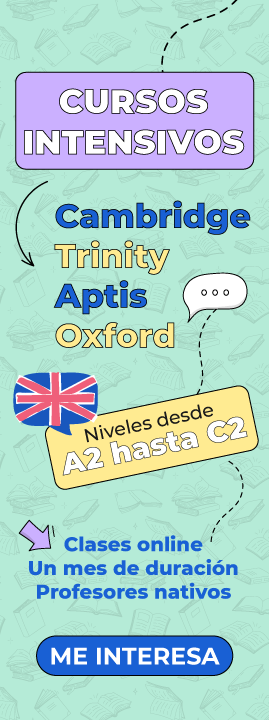Level A2 of Valencian

The A2 level certificate accredits an advanced basic command of the use of the language, both oral and written, which allows satisfying the basic communication needs in everyday situations.
ÍNDICE DE CONTENIDOS
The person who opts for this certificate must be able to understand frequently used phrases and expressions related to topics of immediate importance (for example, basic personal information, family information, shopping, local geography, occupation…); communicate in simple and habitual situations that require a simple and direct exchange of information on familiar and habitual subjects, and communicate, in a simple way, aspects of their personal experience or baggage, aspects of the immediate environment and matters related to immediate needs, or make a basic mediation.
Exam structure
| Area | Value | Duration |
| Oral comprehension area | 25% | ± 15 minutes |
| Written comprehension area | 25% | 1 hour |
| Written expression area | 20% | 35 minutes |
| Oral expression and interaction area | 30% | ± 25 minute |
Oral comprehension
Understands interventions and the most frequent vocabulary on topics of personal and more immediate interest (for example, very basic personal and family information, shopping, place of residence, employment …). They can also understand basic oral information: common instructions in places of the institutional and commercial world, explanations from the teacher, personal information in everyday conversations.
- Understands conversations related to simple and concrete needs, provided that the interlocutors speak slowly and clearly.
- You can understand the general meaning and specific information of clear, leisurely conversations and identify a change in topic, as long as the interlocutor speaks clearly. These conversations will be mainly about the personal sphere and about everyday matters.
- You can generally identify the topic of a discussion or debate if it is conducted slowly and clearly articulated.
- Can understand general meaning or simple specific information from short audio (eg radio) excerpts about everyday matters. You can also understand the general meaning or simple specific information of television programs or other audiovisual media (fictional, descriptive, and narrative texts) if the content is accompanied by images. Is able to globally understand very basic playful texts, such as songs.
Written comprehension
Understands short and simple texts in standard language related to their immediate environment and containing a very frequent vocabulary, including a good number of internationally shared vocabulary terms.
- Understand brief news from the journalistic field and extract basic information.
- Can understand simple argumentative texts and can identify the thesis that supports the text.
- Understand short and not very complex instructional texts , especially related to their environment.
- Can understand descriptive texts about objects, places and people in their environment . You can understand signs, common signs, and informational displays in public places such as streets, restaurants, train stations, workplaces, directions, instructions, and danger signs.
- Extract specific information from the different texts , and deduce the meaning of unknown words from the context. You can find specific and predictable information in simple everyday documents such as brochures, menus, announcements, inventories, and schedules, and isolate the information you are looking for.
- Understand the main types of interpersonal communication writings in common use (letters, emails, only requests for information, • requests, confirmations, etc.) on common topics.
Written expression and interaction
You can write simple texts, such as a story or description, using a simple list of basic elements and connectors; interact by answering short, simple questions in writing; Indicate that you understand what you read and often hold the weight of the interaction.
- He is able to write simple texts on everyday topics: family, life, living conditions, own experience or personal baggage, aspects of the immediate environment …
- Fill in short textual models in highly structured and closed formats.
- You can extract and rephrase keywords and expressions or short phrases from short texts that are within your competence and experience.
- Take note of short and simple messages provided that you can ask to be rephrased. Can express in writing that they have not understood something, briefly but accurately.
- You can write very simple personal letters or emails where you apologize, excuse yourself, or thank someone for something.
Oral expression and interaction
You can communicate in simple and common situations that require a simple and direct exchange of information on familiar and common topics. You can communicate, in a simple way, aspects of your experience or personal baggage, aspects of the immediate environment, and matters related to immediate needs.
- Use simple expressions and phrases to describe or narrate everyday events and actions, one’s own or that of a third person, as well as present in a simple way various aspects related to people, places, recent and autobiographical events, personal experiences, daily routines, tastes and preferences.
- Describe people expressing emotional or physical characteristics and places and spaces in their environment.
- Ask short questions and respond to questions and facts of everyday life: family, workplace, basic data related to work, study, housing, on the street …
- Answer a limited number of simple questions about the content of your intervention and have a dialogue or conversation that reveals these abilities.
- Make short and prepared presentations, with predictable and learned content, on topics related to everyday life, and briefly explain opinions, projects or personal events.
- Interact using simple techniques to start, maintain, and end a short conversation; You can claim attention and indicate that you understand what is being said, and ask in a very simple way to repeat what was said or the clarification of keywords that you did not understand.
- Interact effortlessly in well-structured situations and in short conversations. Provided that the interlocutor helps you, if necessary, and exchange ideas and information on common topics in foreseeable situations of daily life
For registration, consult:
https://examenexam.com/es/es/



